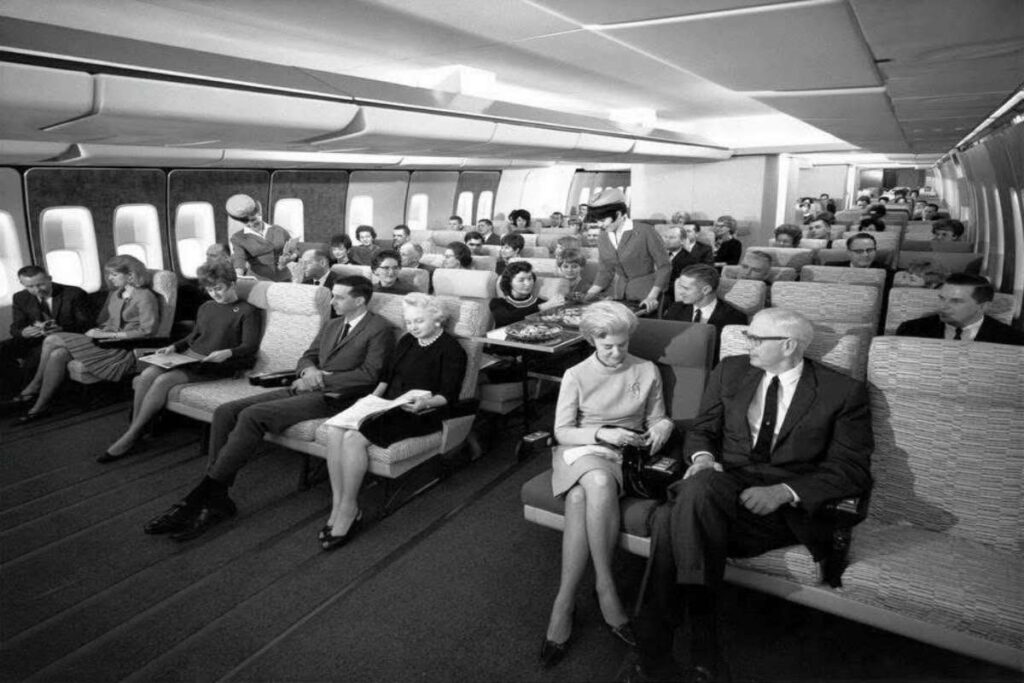If things go as planned, airplanes may start using standing seats soon. Yes! Standing seats. These are saddle-shaped seats that will be placed in an almost-vertical position. As awkward as the idea may sound, it is the current reality of a centuries-old struggle to balance airline profit and passenger comfort.
It is also a fascinating reminder about how far airplane seating has changed since men began to fly in the early 1900s. Let’s go on a journey down memory lane. We will examine the changes that have occurred in airplane seating and what the future holds for airline passengers.
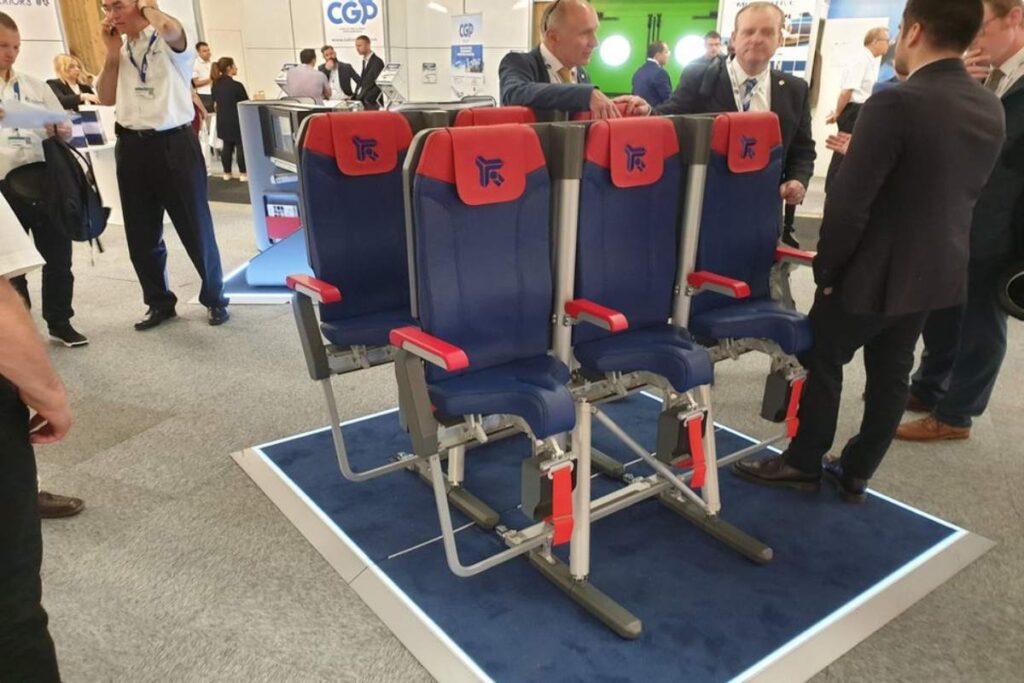
The First Airline Seats and the Era of the Barnstormers (1910s – 1920s)
When you get on a plane, you are most likely expecting a stress-free seating experience. You want more legroom and wider seats. Wide distances between rows, plus comfortable cushioning, are part of a passenger’s dream. But the early airplane passengers never would have dared to imagine such provisions.
The seats on the earliest aircraft were very far from what we have today. Those aircraft mostly had open cockpits and didn’t have the metallic shine of modern aviation. The barnstormers or stunt pilots operated them and usually had one extra seat.
The passengers had to make do with the wooden or metallic constructs that served as seats. They sat with the pilots in the open cockpit and were just happy to be in the air.
The joy of being airborne was enough. The cushion-less seats were the least of their concerns. The absence of seat belts compounded the danger of their situation.
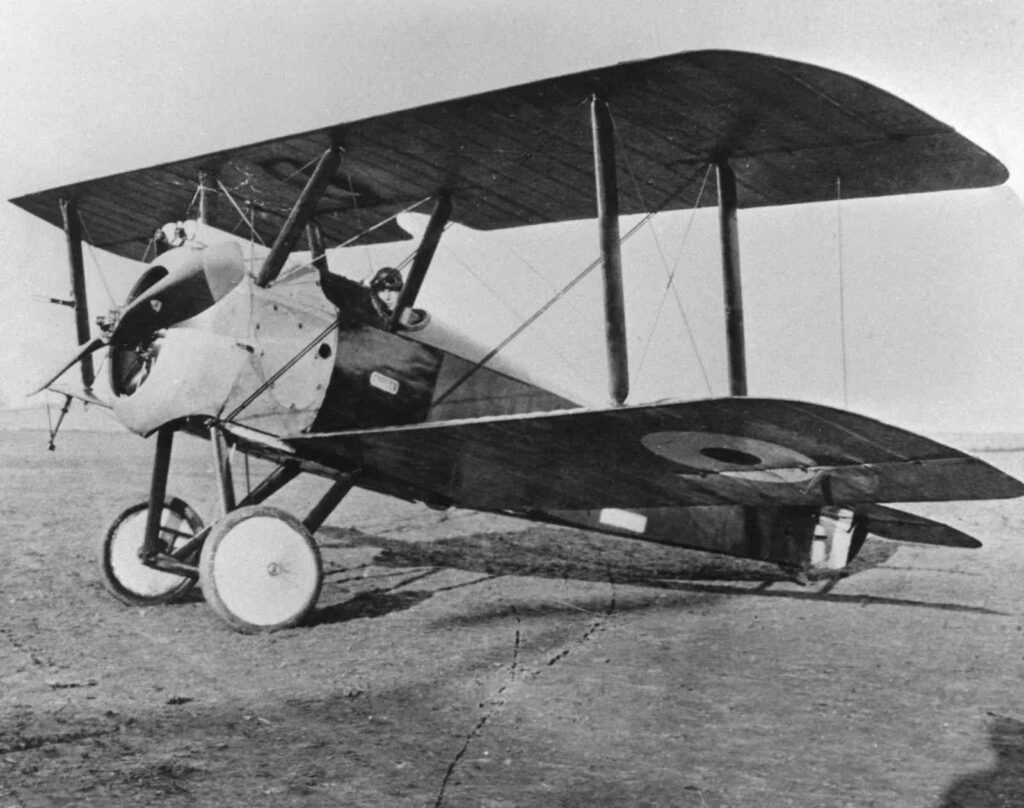
As expected, there were many casualties as most of these aircraft crashed in the course of their journey. There were no safety or seating regulations whatsoever. At this stage of air travel, all that mattered was the ability to fly, even if for a few minutes. But things were going to improve.
Better Seats as Commercial Flights Begin (1920s-1930s)
Trust humans to make things better. Innovation upon innovation enabled humanity to enjoy commercial flights. The seats also benefited from the advancements. The former makeshift stools gave way to fixed seats with light padding. Many of the flight seats had cushions and upholstery.
Although still far from the ones we have today in terms of comfort, it was a significant upgrade. There was more room for between 10 and 20 passengers, and therefore, a seating arrangement had to be implemented.
Passengers sat in two columns for bigger crafts and in a single line for smaller airplanes. There was more legroom and space between seats due to the low passenger numbers in that era. These lucky passengers had the comfort they needed to enjoy these longer flights.
The Era of the Boeings and the Jets (1960s – 1980s)
From nowhere, Boeing invaded the aviation industry with a bang. The American company aimed to bridge the affordability gap. Then came a brilliant idea that swept the airplane manufacturing market off its feet: bigger aircraft.
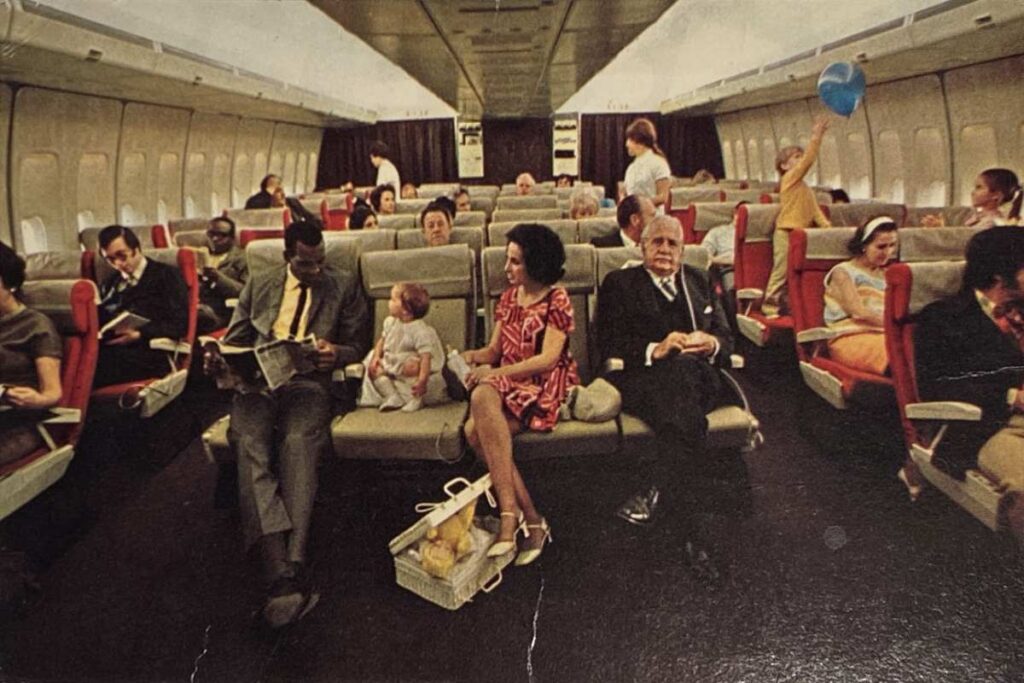
These larger aircraft can accommodate hundreds of passengers and increase revenue for airlines. Airlines were thrilled at the idea of raking in more revenue from a single flight than they would have bagged from multiple flights from the previous smaller aircraft.
The Boeing 747s were wide and long, making it possible for airlines to offer seating categories to customers. The seats were wider and had more cushions. Boeing also introduced reclining seats. These later evolved into the lie-flat beds we have now.
When discussing seating categories, airlines utilized the size of Boeing aircraft to create different levels of comfort. Each had its own seats or seating arrangement.
The 3 Types of Seats In-Flight
Airlines created three seating categories or classes. They were the first class, the business class, and the economy class. These classifications, which attracted different costs, have been maintained to date. Let’s take a look at them.
Economy Class
The economy class is the most affordable and typically the most crowded. It was designed for travellers who just want sufficient comfort on their way to their destination.
Although the seats are comfortable, they aren’t wide, and legroom is limited. Seats in economy class are usually arranged close to each other in a three by four by three column pattern. For smaller aircraft than Boeing, a 3-by-3 seating pattern is used.
Business Class
The business class offered more comfort and luxury than the economy class. As a result, it is more expensive. Most lengthy flights provide a business class where passengers can feel at home while flying.
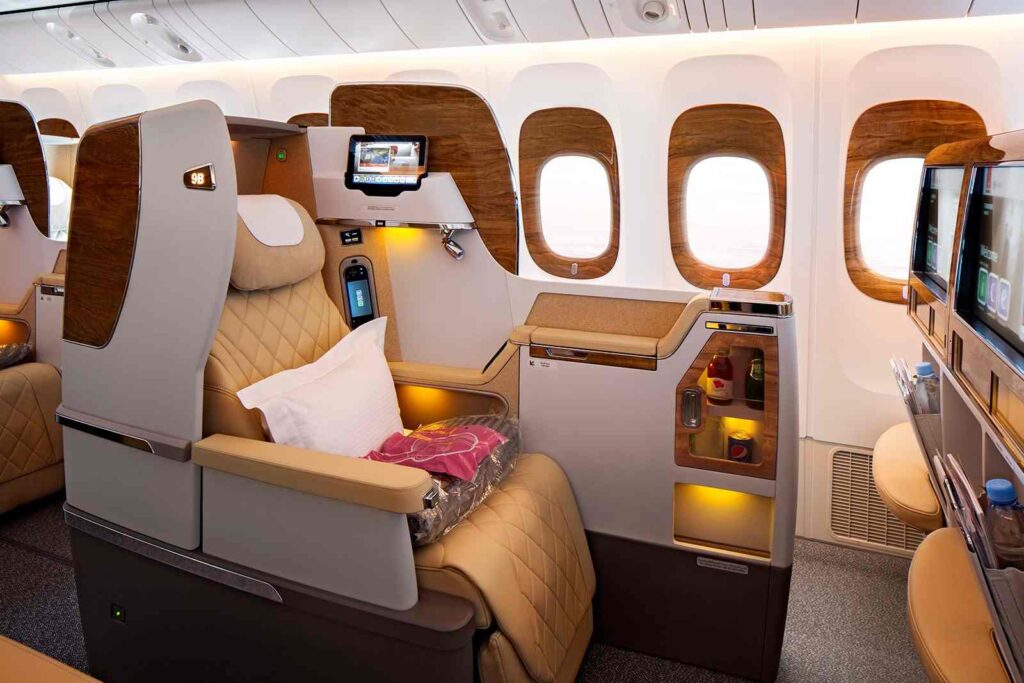
The seats are wider and fewer than those of the economy class. Typically, the seats recline to provide a more comfortable sleeping posture. Each passenger has some privacy, as there are dividers that block them from the next passenger.
First Class
The first-class seats are at the very top in comfort and luxury. They are worth paying for if you have the money. They are more elite than the business class in almost every way. Lengthy flights often feature this category, allowing passengers to feel so at home that time flies incredibly fast.

First-class flights offer the most spacious seating category. Seating spaces or suites could be about 25 inches wide, and they have flat beds. The seating arrangements could be one by two by one or one by one by one, depending on the width of the aircraft or the level of privacy the airline wants to provide.
The Era of Reclining Seats (1980s – 2000s)
In the 1980s, as airlines competed for passengers, reclining seats emerged. Initially, these seats were fully mechanical, allowing passengers to fall back by 4 to 8 inches and enjoy more relaxed postures.
For business and first-class seats, the chairs could recline even further. This then gave rise to the idea of seats that recline into beds. However, the reclining seats in economy class caused some controversy.
Reclined seats encroached on the space of the passengers behind, resulting in conflicts. Some airlines had to shelve the idea for economy class and revert to non-reclining versions.
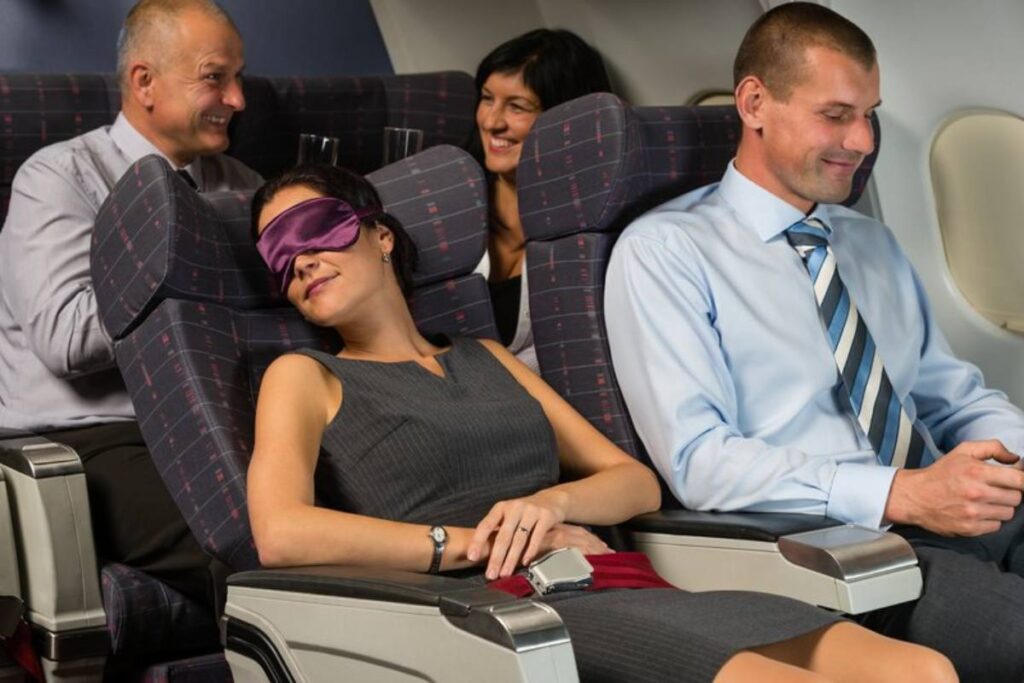
The Standing Seats Idea (2000s to Date)
Airlines haven’t stopped trying to strike a balance between passenger comfort and cost. After a while of conceptualizing, the standing seats idea was finally unveiled in 2010. The proposal came from popular designer Aviointeriors (Skyrider, 2010).
If the plan sees the light of day, many more people will fit into the economy class of an airplane. Passengers who would be strapped to the saddle-like seats, almost in a standing position, will not weigh as much anymore.
Although most of the top dogs in the aviation business have refused to entertain the idea, Ryanair and some others have decided to consider it. The primary concerns about this concept are the safety and comfort of passengers.
In the United States, the major hurdle to the standing seats idea is the Federal Aviation Administration (FAA) regulations. Also, many passengers are not very confident about the idea.
FAA statutes mandate that all airplanes have a 16kg crashworthiness. This means that the aircraft should produce up to 16 kg of gravitational force to withstand crash forces during an emergency landing.
This rule will require that seats are securely attached to the floor of the plane and sufficiently restrain passengers in the event of a disturbance or crash. In addition, the standing seats option makes it difficult to meet the FAA’s limit of 90 seconds for passenger evacuation. The standing seats idea means that the seats are so closely packed that there will be too much obstruction to evacuate occupants within the timeframe.
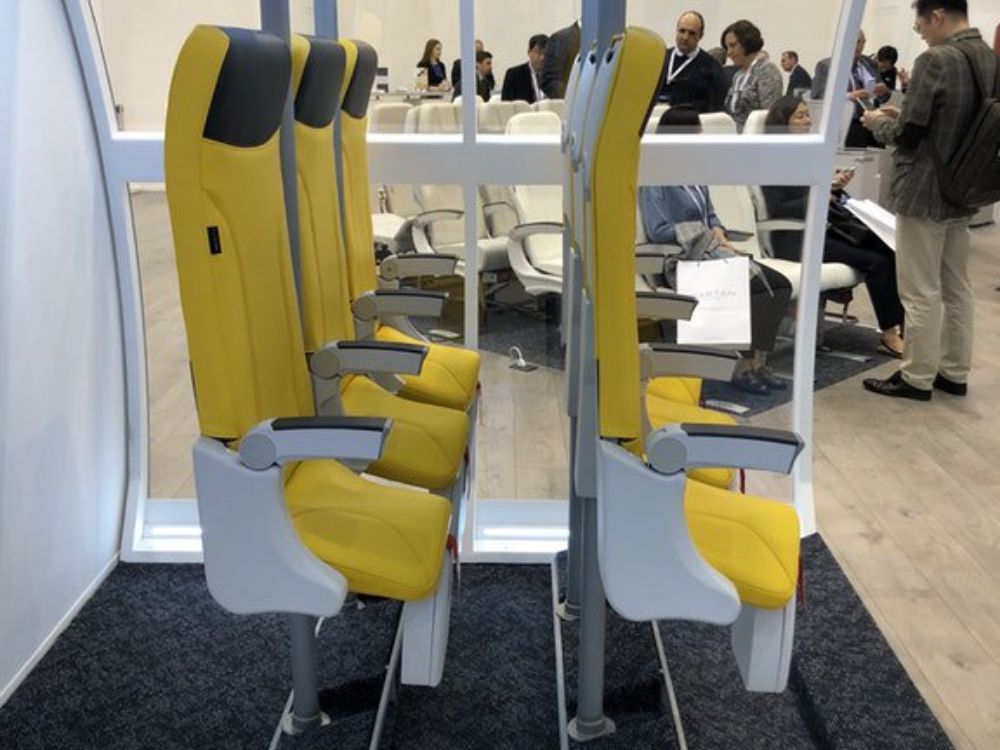
However, there are indications that a revised standing seat plan may become a reality very soon. Aviointeriors is hatching plans to introduce Skyrider 2.0. The company unveiled the idea at the Aircraft Interiors Expo in 2018, held in Hamburg, Germany.
Skyrider 2.0 is a significant improvement from its 2010 version. Aviointeriors added more padding and a stronger floor-to-seat connection. However, whether they’ve answered the regulatory questions remains to be confirmed.
Polls across social media suggest that aside from the FAA, passengers are yet to be convinced by the idea. Many have expressed health concerns about having to stand for the duration of a flight. Some have called the plan “ridiculous” and “sinister.” What about you, do you think it’s worth a try?


